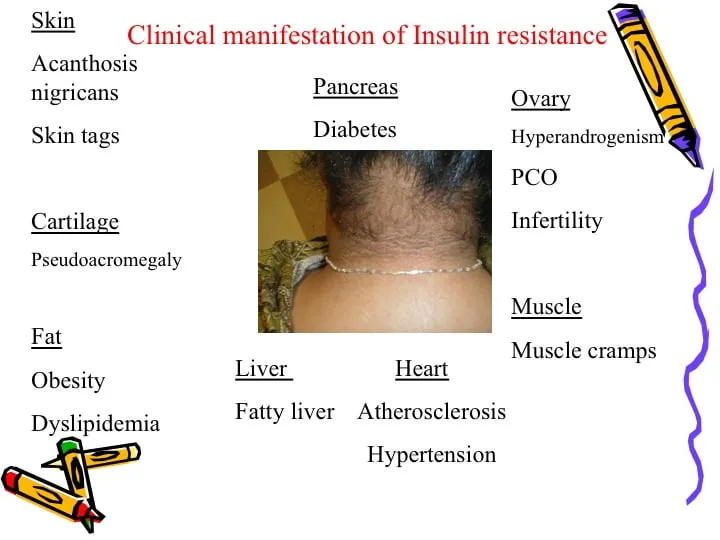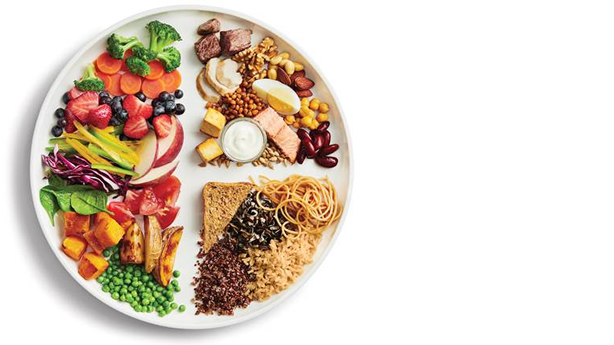
Insulin resistance can be understood as a physiological condition that is related to type 2 diabetes and obesity, which are frequently associated with high blood glucose. It is a condition in which the cells of the human body, especially those present in the muscles, fat, and liver, do not respond well to the insulin secreted by the body and cannot easily take up glucose from the human blood. This results in the pancreas making and generating more insulin to produce healthy glucose that enters the cells.
People who have genetic or lifestyle risk factors are more likely to develop insulin resistance, or, in other words, what is called prediabetes. These risk factors can include the following:
- Being overweight or obesity
- Age 45 or older.
- Family history with diabetes, individuals whose parents, brother, or sister are diagnosed with diabetes.
- Physical inactivity can create a lifestyle risk toward insulin resistance
- A history of heart disease or stroke
- Polycystic ovary syndrome also called PCOS
If you have been diagnosed with metabolic syndromes such as a combination of high blood pressure, abnormal cholesterol levels, and large waist sizes then you are also more likely to be at risk of pre-diabetes or insulin resistance.
Symptoms of Insulin Resistance
The symptoms of insulin resistance can manifest in such a way that most people do not realize that they have insulin resistance until and unless they have run a blood test. Every individual has high blood sugar levels from time to time. However, when the individual’s body sugar level is consistently high, one can notice that he or she is thirstier than usual, urinating frequently, is mostly tired all the time, has blurred vision, and has some tingling sensation on the bottom of the feet.

Many people have also reported that there are no symptoms of prediabetes, often for years. Prediabetes may be invisible until and unless it develops into type 2 diabetes. Some people with prediabetes have reported experiences that include the following symptoms:
- Dark skin in there and pet or backs and side of the neck
- Skin tags
- Eye changes that can lead to diabetic retinopathy
How Insulin Resistance is Diagnosed?
Doctors will frequently ask questions about the symptoms and the family medical history to evaluate whether the person has insulin resistance or not. Diagnosing insulin resistance requires a blood test. Running a blood test is necessary to determine insulin resistance in a person. This might be done through a small finger prick or by having a small needle inserted into a vein to take a sample of blood. For this kind of blood test, the person is often required to fast, which means avoiding eating or drinking anything except water for eight hours at least before the test. Then the blood sample will be sent to a lab, which will then indicate insulin resistance. Research done by WebMD suggests that people with insulin resistance often have high cholesterol.
Can Insulin Resistance be Prevented or Avoided?
You can prevent or reduce your insulin resistance by losing weight, exercising regularly, and eating a healthy diet. Choosing healthy carbohydrates, for example, eating whole grain bread instead of white bread, and making necessary changes in your diet can reduce insulin resistance in one’s body.
It can be concluded that not all factors that contribute to insulin resistance can be treated; factors such as genetic history and age cannot be changed. However, lifestyle modifications can be considered the primary treatment for insulin resistance. The lifestyle modifications can include the following changes:
Eating a Healthy Diet
Diet plays a huge role in an individual‘s blood sugar and insulin levels. Intake of highly processed, high-carbohydrate, and high-fat foods can cause more insulin resistance as they require more insulin. Talking generally, eating foods that have a low to medium glycemic index and limiting foods that have a chemical index can help the individual reverse or manage insulin resistance. Intake of foods with high fiber also helps regulate blood sugar levels because it takes the body longer to digest fiber, which means more blood sugar levels don’t spike as much.
Seeking the assistance of a nutritionist or one’s health care provider may recommend avoiding eating an excessive amount of carbohydrates. Excessive consumption of carbohydrates can stimulate excess insulin production in the body and does not help with insulin resistance. The nutritionist may also suggest limiting unhealthy food intake and limiting the intake of sugar, red meat, and processed starches. This can be exchanged with the intake of a healthy diet of whole foods that includes more vegetables, fruits, whole grains, fish, and lean poultry.

Physical Activity
Inculcating workout routines in one’s daily life can help in the treatment of insulin resistance. Getting regular amounts of moderate-intensity physical activity helps increase glucose energy usage and improve muscle insulin sensitivity. This can help in the reduction of insulin resistance in the individual's body. A single session of moderate-intensity exercise can increase glucose uptake by at least 40%.

Losing Excess Weight or Weight Management
Seeking healthcare providers' advice to lose excess weight can contribute to treating insulin resistance.
Conclusion
This can be understood as a complex condition that can affect an individual’s health in several ways. However, it doesn’t have any symptoms until and unless it turns into prediabetes or type 2 diabetes, and to prevent such a condition, the best thing an individual can do is reverse insulin resistance by maintaining a healthy weight, exercising regularly, and eating a healthy diet. Regular checkups with your doctor will also help you understand the state of your body and what necessary precautions and actions should be taken to reverse insulin resistance.
Disclaimer: The information and other content provided in this blog, or in any linked materials, are not intended and should not be construed as medical advice, nor is the information a substitute for professional medical expertise or treatment. If you or any other person has a medical concern, you should consult with your healthcare provider.


.png)


